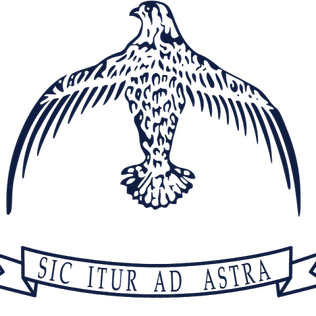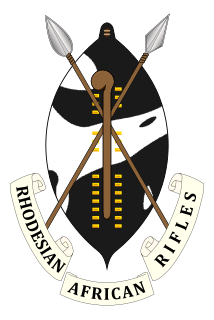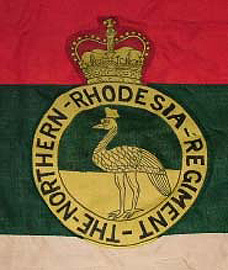This article relies largely or entirely on a single source .(May 2017) |
St. Stephen's College, Balla Balla, Southern Rhodesia (later: Rhodesia) was a private Christian high school for boys from 1956 to 1975.
This article relies largely or entirely on a single source .(May 2017) |
St. Stephen's College, Balla Balla, Southern Rhodesia (later: Rhodesia) was a private Christian high school for boys from 1956 to 1975.
The 1956 prospectus for St. Stephen's opens with a statement from Reverend Maurice Lancaster, "There has been for some time a growing conviction among parents that today there is a great need for their sons to receive at school not only a sound education to fit them to take their places as citizens, but also a well-based knowledge of Christianity and all it means...". [1] To achieve this goal, the prospectus lists the aims of the college as follows: (a) to give the best possible secondary education for boys for the most reasonable terms; (b) to give a firm grounding in the Christian Faith as held and taught in the Book of Common Prayer and in the Formularies of the Church of the Province of South Africa; (c) to provide sound and wise discipline; and (d) to train for a full and useful life in the world. [2] The school was built on 250 acres (1.0 km2) of land offered by Mr. A. A. Sanderson.
The school opened on 1 February 1959, with 35 pupils, which soon increased to 40. The school uniform was a khaki outfit of shorts and shirt for everyday wear, and a dress uniform of long grey trousers, white shirts, black blazers and school tie for evenings in the dining hall. There were also prefect's ties and house honours ties, as well as two badges. One badge was a red cross bearing a St. Stephen's crown, while the other, the official and registered crest, was a combination of the Sanderson crest (talbot, torch and helmet), the Lancaster crest (red roses), and the crown of St. Stephen. The registered crest (as a blazer badge) was worn solely by Old Boys (former pupils); this is the badge still worn today by members of the St. Stephen's College Old Boys Association. [2]
To provide the best Christian-based education at a reasonable cost, the founders originally planned to establish a monastery to accommodate teacher monks. However, by 1959, it became apparent that this was not feasible, and from then on, the board of governors employed teachers from Southern Rhodesia and the United Kingdom. The building originally constructed to be the monastery became Abbey House for juniors in 1968. Religious training included a Eucharist at 8 am and an Evensong at 6 pm on Sundays, a service in the chapel each day before classes began and House Prayers in the evening.
Pupils originally sat the Cambridge School Certificate examinations, but later General Certificate of Education (GCE) examinations at ordinary and advanced level (O-Level and A-Level) were marked by the Associated Examining Board (AEB) in England. Pupils intending to apply to universities in South Africa finished their schooling after taking intermediate examinations, called M-Level examinations, as these were the equivalent of the higher-grade matriculation examinations in South Africa. Pupils intending to apply to universities in Rhodesia or the United Kingdom proceeded to take the A-level examinations, which followed a further year of study. These two "final years" were termed the Lower VI (6th) Form and Upper VI (6th) Form, respectively.
Sport was an important part of the curriculum. St. Stephen's competed with other, larger, Rhodesian schools in rugby, cricket and hockey. In these sports, St. Stephen's was a keen rival of Falcon College, in nearby Essexvale.
Dances were held periodically and attended by young ladies from Evelyn, Townsend and other senior schools in Bulawayo. This social arrangement was reciprocal.
A unique aspect of life at St. Stephen's, was that the boys were allowed to go into the surrounding bush (bushveld), in groups of three, after chapel on Sundays. It was not uncommon for the pupils to see antelope, such as the large kudu and the smaller duiker, and snakes, such as the black mamba, puff adder and the African rock python. The school had an active Wildlife Club in the 1970s, and, with permission from the Rhodesian Department of National Parks and Wildlife, kept an impressive collection of snakes. [2]
In 1963, when the Central African Federation came to an end with the break-up of the Federation of Rhodesia and Nyasaland, most of the students traveled to the school from outside Rhodesia; most of the students travelled to the school by coach from Zambia (formerly: Northern Rhodesia) or Malawi (formerly: Nyasaland), others arrived by plane and private vehicle from Botswana, Mozambique, and the Transvaal province of South Africa. The school continued with these students crossing the new borders to get to school.
In 1973, there were 219 pupils at St. Stephen's College. In this year, the Rhodesian government closed its border with Zambia and, even with the special dispensation given for students to cross the border, it became risky for pupils to travel. To make the border crossing at the Chirundu Bridge, over the Zambesi River, the boys had to change coaches while armed guards patrolled both sides of the border. After the border closure, it became difficult for parents in Zambia to transfer fees and enrollment dropped to 175 pupils. Under this pressure, the privately funded school closed in 1975. [2]
There is a memorial to St. Stephen's College, erected by the school's board of governors, where the entrance to the college used to be. This takes the form of a semicircle, of three linked short columns, not far from the Beitbridge-Bulawayo road near the junction with the Filabusi road. On the centre column is the foundation stone, which had been unveiled by the Governor of Southern Rhodesia, Sir Peveril William-Powlett. The left column bears a memorial plaque to the parents of Mr. Sanderson, previously on the college gates, and the right column bears the names of the members of the school's board of governors and the headmasters.
As of 2007, former pupils of St. Stephen's College were living in at least 17 different countries. There is an active Old Boy's Association which meets regularly in South Africa, Australia and the United Kingdom.[ citation needed ]

Southern Rhodesia was a landlocked self-governing British Crown colony in southern Africa, established in 1923 and consisting of British South Africa Company (BSAC) territories lying south of the Zambezi River. The region was informally known as south Zambesia until annexed by Britain at the behest of Cecil Rhodes's British South Africa Company, for whom the colony was named. The bounding territories were Bechuanaland (Botswana), Northern Rhodesia (Zambia), Moçambique (Mozambique), and the Transvaal Republic.

The University of Zimbabwe (UZ) is a public university in Harare, Zimbabwe. It opened in 1952 as the University College of Rhodesia and Nyasaland, and was initially affiliated with the University of London. It was later renamed the University of Rhodesia, and adopted its present name upon Zimbabwe's independence in 1980. UZ is the oldest and best ranked university in Zimbabwe.

Sir Reginald Stephen Garfield Todd was a liberal Prime Minister of Southern Rhodesia from 1953 to 1958 and later became an opponent of white minority rule in Rhodesia.

Sir Roland "Roy" Welensky, was a Northern Rhodesian politician and the second and last Prime Minister of the Federation of Rhodesia and Nyasaland.

Falcon College is an independent boarding school for boys and girls aged 12–18 in the southern Matabeleland region of Zimbabwe. It was founded in 1954 near Essexvale, Federation of Rhodesia and Nyasaland, 55 km southeast of Bulawayo on the remains of the Bushtick Mine. The college's graduates include a British member of parliament, surgeons and doctors, leaders of industry and commerce, soldiers and educators.

St George's College is a private Jesuit boys high school in Harare, Zimbabwe. The school, colloquially referred to as Saints or George's, is located in Borrowdale, a Harare suburb. The land was donated to the Jesuits. This led to the relocation of the school site from Bulawayo to Harare, the foundation of St George's College. On the same site, a preparatory primary school was established, called Hartmann House(HH). This site is next to the official Zimbabwe State House, and the official president's house called Zimbabwe House. The school motto is Ex Fide Fiducia, a Latin phrase meaning "From Faith Comes Confidence".

The Rhodesian African Rifles (RAR) was a regiment of the Rhodesian Army. The ranks of the RAR were recruited from the black African population, although officers were generally from the white population. The regiment was formed in May 1940 in the British colony of Southern Rhodesia.
Goffals or Coloured Zimbabweans are persons of mixed race, predominately those claiming both European and African descent, in Malawi, Zambia, and, particularly Zimbabwe. They are generally known as Coloureds, though the term, Goffal. is used by some in the Coloured community to refer to themselves, though this does not refer to the mixed race community in nearby South Africa. The community includes many diverse constituents of Shona, Northern Ndebele, Bemba, Fengu, British, Afrikaner, Cape Coloured, Cape Malay and less commonly Portuguese, Greek, Goan, and Indian descent. Similar mixed race communities exist throughout Southern Africa, notably the Cape Coloureds of South Africa.
The Rt Hon. Sir Robert Clarkson Tredgold, KCMG, PC, was a Rhodesian barrister, judge and politician.
This article is an introduction to the history of first-class cricket in Zimbabwe, formerly Rhodesia and Southern Rhodesia. The timespan of the article is from the formation of a first-class Rhodesian team in August 1890 until the inaugural Test appearance of Zimbabwe in October 1992.

The military history of Zimbabwe chronicles a vast time period and complex events from the dawn of history until the present time. It covers invasions of native peoples of Africa, encroachment by Europeans, and civil conflict.

The Rhodesian Security Forces were the military forces of the Rhodesian government. The Rhodesian Security Forces consisted of a ground force, the Rhodesian Air Force, the British South Africa Police, and various personnel affiliated to the Rhodesian Ministry of Internal Affairs. Despite the impact of economic and diplomatic sanctions, Rhodesia was able to develop and maintain a potent and professional military capability.
John Edmond is a Rhodesian folk singer and retired soldier who became popular in the 1970s for his Rhodesian patriotic songs. He reached the height of his fame during the Rhodesian Bush War where he was sometimes known as the "Bush Cat".
Zambia, officially known as the Republic of Zambia, is a landlocked country in Southern Africa. The neighbouring countries are the Democratic Republic of the Congo to the north, Tanzania to the north-east, Malawi to the east, Mozambique, Zimbabwe, Botswana, and Namibia to the south, and Angola to the west. The capital city is Lusaka, located in the southeast of the country. The population is concentrated mainly around the capital and the Copperbelt to the northwest.

The history of the Jews in Zimbabwe reaches back over one century. Present-day Zimbabwe was formerly known as Southern Rhodesia and later as Rhodesia.

The Rhodesia Regiment (RR) was one of the oldest and largest regiments in the Rhodesian Army. It served on the side of the United Kingdom in the Second Boer War and the First and Second World Wars and served the Republic of Rhodesia in the Rhodesian Bush War.

This is a survey of the postage stamps and postal history of Zimbabwe.

The Northern Rhodesia Regiment (NRR) was a multi-battalion British colonial regiment raised from the protectorate of Northern Rhodesia. It was formed in 1933 from elements of the Northern Rhodesia Police, which had been formed during Company rule in 1912. Made up of black other ranks and white officers, its motto was "Different in Race, Equal in Fidelity". This motto may have been adopted following native African porters during the First World War being recognised and compensated as couriers by the British.
Maureen Thelma Watson was a Rhodesian politician.
Harry Elinder Davies was a Rhodesian and Zimbabwean lawyer and judge.